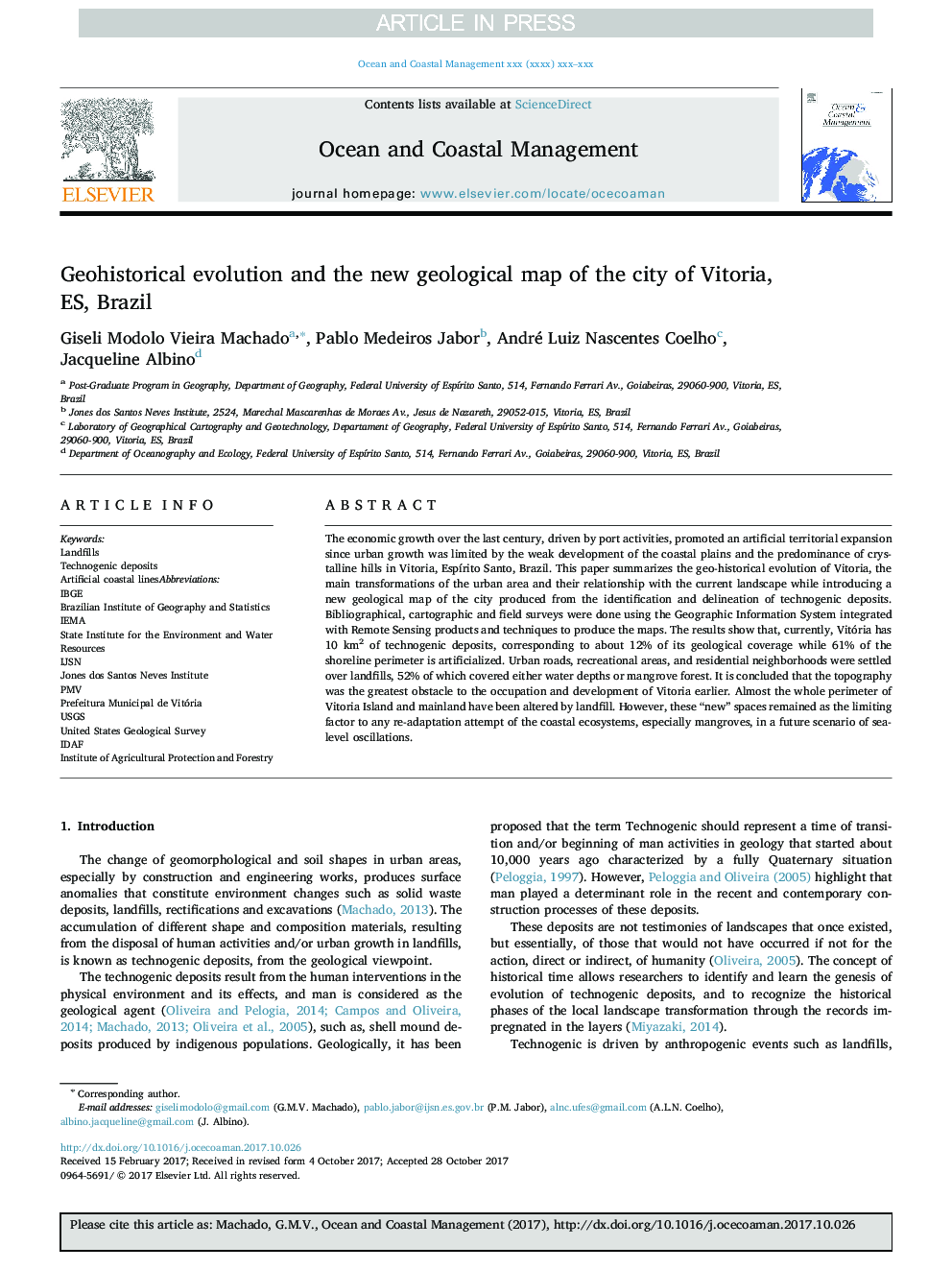| Article ID | Journal | Published Year | Pages | File Type |
|---|---|---|---|---|
| 8060926 | Ocean & Coastal Management | 2018 | 8 Pages |
Abstract
The economic growth over the last century, driven by port activities, promoted an artificial territorial expansion since urban growth was limited by the weak development of the coastal plains and the predominance of crystalline hills in Vitoria, EspÃrito Santo, Brazil. This paper summarizes the geo-historical evolution of Vitoria, the main transformations of the urban area and their relationship with the current landscape while introducing a new geological map of the city produced from the identification and delineation of technogenic deposits. Bibliographical, cartographic and field surveys were done using the Geographic Information System integrated with Remote Sensing products and techniques to produce the maps. The results show that, currently, Vitória has 10Â km2 of technogenic deposits, corresponding to about 12% of its geological coverage while 61% of the shoreline perimeter is artificialized. Urban roads, recreational areas, and residential neighborhoods were settled over landfills, 52% of which covered either water depths or mangrove forest. It is concluded that the topography was the greatest obstacle to the occupation and development of Vitoria earlier. Almost the whole perimeter of Vitoria Island and mainland have been altered by landfill. However, these “new” spaces remained as the limiting factor to any re-adaptation attempt of the coastal ecosystems, especially mangroves, in a future scenario of sea-level oscillations.
Keywords
Related Topics
Physical Sciences and Engineering
Earth and Planetary Sciences
Oceanography
Authors
Giseli Modolo Vieira Machado, Pablo Medeiros Jabor, André Luiz Nascentes Coelho, Jacqueline Albino,
